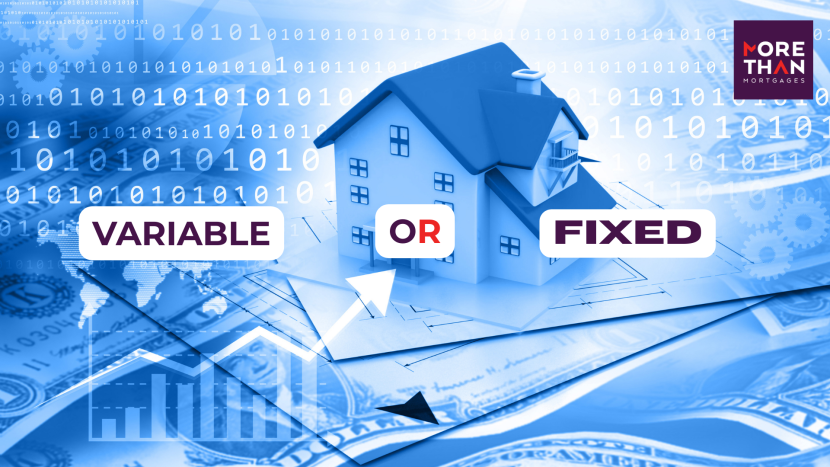Now it’s time to apply for a home loan, but you’re asked – would you like a fixed or variable loan?
This is one of the decisions you’ll need to make when applying for your loan. Both have their pros and cons, and the right choice really depends on your personal situation, and what’s happening in the market. Let’s break down what each loan type brings to the table and how to figure out which one suits you best.
What is a Fixed Rate Loan?
A fixed rate loan locks in your interest rate for a set period, usually between 1 to 5 years. During this time, your interest rate (and repayments) stays the same, regardless of what the RBA (Reserve Bank of Australia) decides to do.
Benefits of a Fixed Rate Loan:
- Predictability: You’ll know exactly how much your mortgage repayments will be for the fixed term, making it easier to budget.
- Protection from Rate Increases: If interest rates go up, your repayments will stay the same, potentially saving you money.
- Peace of Mind: My advice for going with a fixed loan has always been – fix because you want peace of mind / stability / avoid surprises / sleep-at-night factor. A fixed rate loan can provide this certainty. Especially great for those of us with a smidge of anxiety.
Drawbacks of a Fixed Rate Loan:
- Limited Flexibility: Most fixed rate loans come with restrictions, such as caps on extra repayments or fees for breaking the loan early if you refinance or sell your property. Most lenders will allow you to pay $10k per annum in additional repayments before you’re charged early repayment fees. The majority of lenders also don’t allow 100% offset accounts on fixed rate loans.
- Missing Out on Rate Drops: If interest rates fall, you won’t benefit from the lower rates during the fixed term. You’re locked into the agreed rate. A bit dumb. But keep in mind, it’s the peace of mind that you needed in the first place!
What is a Variable Rate Loan?
A variable rate loan means your interest rate can go up or down depending on what’s happening in the market. It’s linked to the Reserve Bank of Australia’s (RBA) cash rate and the overall economy, so your repayments can shift—sometimes up, sometimes down—as things change over time.
Benefits of a Variable Rate Loan:
- Flexibility: You’ll have more options for making extra repayments, which can help you pay off your loan faster and reduce interest over time. Many variable rate loans also offer redraw and offset facilities.
- Benefit from Rate Drops: If the market interest rate decreases, your loan repayments will decrease as well.
- No Lock-in Period: You can usually refinance or make changes to your loan without incurring heavy fees.
Drawbacks of a Variable Rate Loan:
- Uncertainty: Your repayments can increase if interest rates rise, affecting your household cash flow.
- Higher Rates During Economic Shifts: If market conditions worsen or the RBA raises rates, your loan repayments could significantly increase, putting pressure on your finances.
How to Decide Which is Right for You
Choosing between a fixed or variable rate loan depends on you and your circumstances. Here’s a few things to think about.
- What’s Your Risk Tolerance? If you don’t have too much cash in the bank, or you’re a nervous nelly and are going to lie awake at night worrying about your home loan repayment going up, a fixed rate loan may be a better fit. However, if you’re comfortable with some uncertainty and have a cash buffer in an offset account, then variable might be more suitable.
- How’s the Current Market? Keep an eye on interest rate trends. Or, if you’re not sure how to do that (because let’s be real, you’ve got a full-time job and 4 kids to juggle!), just ask your broker what rates have been doing over the past 1-2 years. If rates are tipped to rise, locking in a fixed rate can protect you from paying more later. But if rates are looking to drop, a variable rate might let you take advantage of those lower repayments.
- Do You Value Flexibility? If you want the ability to make extra payments (more than $192 per week! Which is $10k per annum), access redraw facilities, offset accounts, or refinance easily, then a variable rate loan often offers more flexibility.
- What’s Your Long-Term Plan? If you plan to stay in your home for the foreseeable future, a fixed rate loan might provide that sleep-at-night factor, especially in times of economic uncertainty. But if you’re thinking about selling or refinancing in the near future, the flexibility of a variable loan could be more useful.
Split Loans: Say what?! The Best of Both Worlds?
If you’re on the fence about fixed or variable, or you’re someone who suffers from analysis paralysis, then a split loan might offer a solution. This means you can fix part of your loan while leaving the other portion on a variable rate. You get the security of a fixed rate on part of the loan, while still having the flexibility to benefit from potential rate drops and make extra repayments.
No One-Size-Fits-All
There’s no one-size-fits-all when it comes to picking between a fixed or variable rate loan. It really comes down to your financial situation, goals, and how much risk you’re comfortable with. Here at MTM, we look at your situation, and advise based on – if this were me, what would I do?
Call us now on 02 6188 4555 or make an appointment for a free, no obligation consultation.
#HomeLoanTips #MortgageAdvice #FixedRateLoan #VariableRateLoan #MoreThanMortgages

